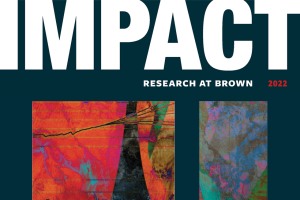PROVIDENCE, R.I. [Brown University] — With more than a million dollars on hand thanks to emergency federal pandemic funding — and thousands in need of money to pay the bills and feed their families — the Rhode Island Department of Health (RIDOH) launched cash assistance and emergency food programs in just two weeks in the fall of 2020. At the center of that undertaking was Brown Class of 2020 graduate Ella Satish, who had planned to be teaching English in Colombia on a gap year before medical school. When travel was cancelled because of pandemic precautions, Satish changed course, and utilizing the research and organizational skills gained from work on her Brown thesis, led a RIDOH pandemic assistance program.
At home, on College Hill and off-campus, undergraduate research maintains momentum
From conducting fluid dynamics experiments in a home lab to spearheading a statewide COVID-19 relief plan, Brown undergraduate students pursued, developed and adapted research projects despite challenges posed by the pandemic.
“ [The students] were innovative enough to figure out how to continue these projects in ways that they wouldn’t have thought about if not for the challenges that the pandemic brought. ”
Satish is just one example of how Brown students showed resilience and harnessed their research skills and interests to help others during the COVID-19 pandemic. Some projects arose to meet needs that emerged during the pandemic; others were reimaginings of work the students intended to complete on campus. Regardless, the research did not stop — Brown students found ways to continue their work, whether it was back in their hometowns or confined to their dorms or apartments in Providence.
Resilience
Continuing research in home labs
“I felt like I spent a million hours in my bedroom,” Portia Tieze said, reflecting on the Fall 2020 remote learning semester. But she was able to escape the Zoom screens during labs for her fluid mechanics course. Even though the mechanical engineering student couldn’t be in the lab at Brown, her professor’s remote lab kits enabled the class to have a hands-on learning experience at home, to better understand fluid flows and the forces that drive them.
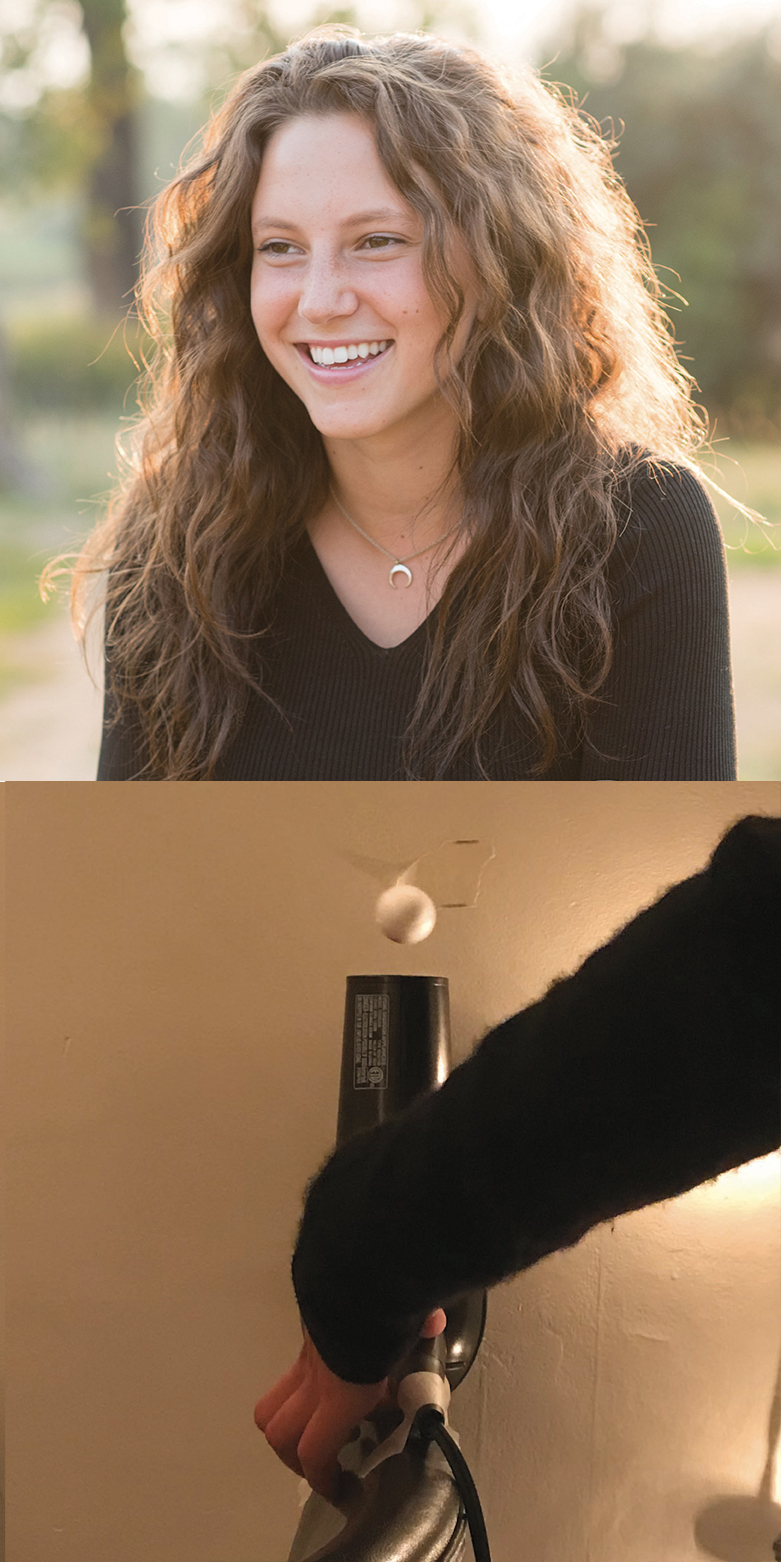
“I remember there was one lab where we had to balance a ping pong ball in the airstream of a hair dryer. I was working on the lab with one of my good friends, and we were really struggling to keep the ball in the air,” she said. “It was so hilarious that we were just cracking up, and that alone was nice, to have a moment.”
The goal of that experiment was to levitate the ping pong ball by applying enough air to hold the weight of the ball, thereby investigating drag forces, the same forces that enable airplanes to fly.
Tieze was also part of a team of students who worked with the course professor, Roberto Zenit, to create, test, and assemble the lab kits over the summer. The students offered essential perspective on which items their peers would readily have on hand at home. Tieze pointed out, for example, that most students wouldn’t have access to a garden hose in a dorm or apartment.
“Professor Zenit wanted to make sure that we would have access to the items, like a measuring cup or corn syrup or honey, or a tray to pour it on,” said Tieze, who is now a senior at Brown. Doing the experiments at home enabled her to be more independent than in the lab, she said.
“I definitely learned resilience and being adaptable. There were many moments where I thought to myself, ‘I can figure this out. I could go ask the professor a million questions, or I could choose to get a little creative here,’” she said. “The labs granted us a little bit of space and flexibility in our problem solving, encouraging us to really think like engineers do.”
Motivation
Pursuing research at off-campus sites
While junior Justin Rhee was finishing his Spring 2020 Dynamics and Vibrations engineering course from his home in Southern California, he was also revamping his plans for the summer. His on-campus research had been cancelled as a safety precaution, so he was looking for local opportunities.
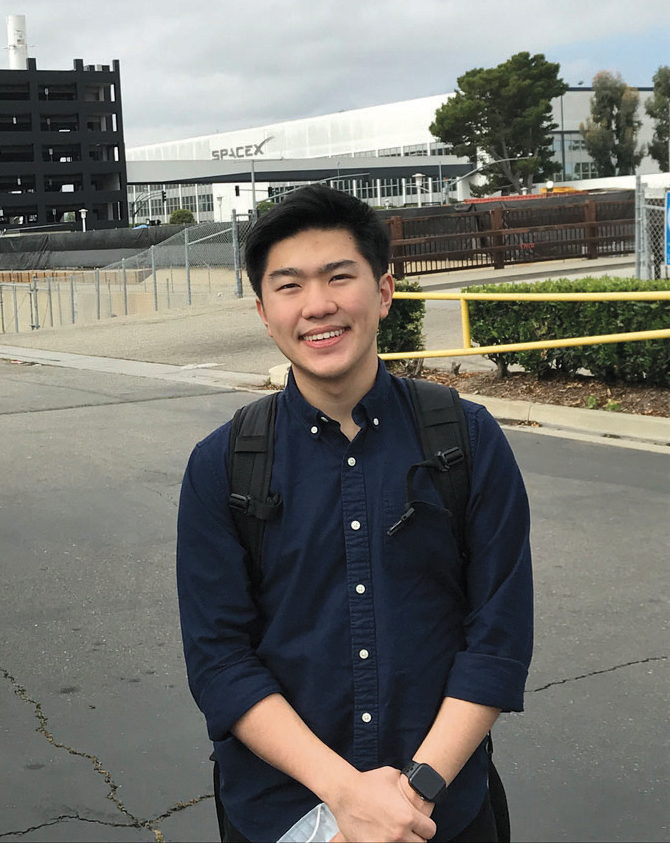
“After we got sent home, I saw an article published about SpaceX, that they were making face shields for nearby hospitals, and I thought that was pretty cool,” Rhee said. “And the SpaceX headquarters is not too far from my house, so I submitted an intern application.”
SpaceX, Elon Musk’s aerospace manufacturing company, is headquartered in Hawthorne, California, part of the Los Angeles metropolitan area, and Rhee is from nearby Temecula. While Rhee waited to hear back on his application for a data processing internship, he worked on a computational project for that Dynamics and Vibrations class, an addition the professor made when courses switched to remote learning. The project modeled the spread of an infection through a small community and turned out to be a deciding factor in Rhee getting the internship.
“Completing that project and having a product to show the flight surgeon at SpaceX really helped. He was pretty impressed by the data processing that was done,” Rhee said.
Rhee is a student in Brown’s Program in Liberal Medical Education (PLME), an eight-year program from undergraduate to medical school, and is studying electrical engineering as an undergraduate. PLME students can pursue an AB or ScB degree in any Brown concentration, whether in the humanities or behavioral, physical, or life sciences, and then finish the last four years of the program in the Medical School, culminating in the MD degree. The program is the only one of its kind in the Ivy League.
“Without Brown’s educational philosophy with the open curriculum, I wouldn’t have had the opportunity to work at SpaceX,” Rhee said. “I probably would have been pursuing a traditional premed track and wouldn’t be able to study engineering just because I want to. Studying engineering is what gave me an edge in finding this opportunity, because I don’t think there are too many people who intend to go into medicine or a medically related field who are doing a pure engineering field as their undergrad degree.”
Responsiveness
Investigating pandemic increases in gender-based violence
Merih Deniz Toruner is only a junior at Brown but has already collaborated with the Mayo Clinic, Harvard University, and Massachusetts General Hospital. The PLME student is studying computational biology with the goal of integrating computer science into her clinical research. Toruner, a native of Turkey, engaged in oncology research at the Mayo Clinic before college; she currently works on brain cancer research in Brown’s Tapinos Laboratory of Cancer Epigenetics and Plasticity.
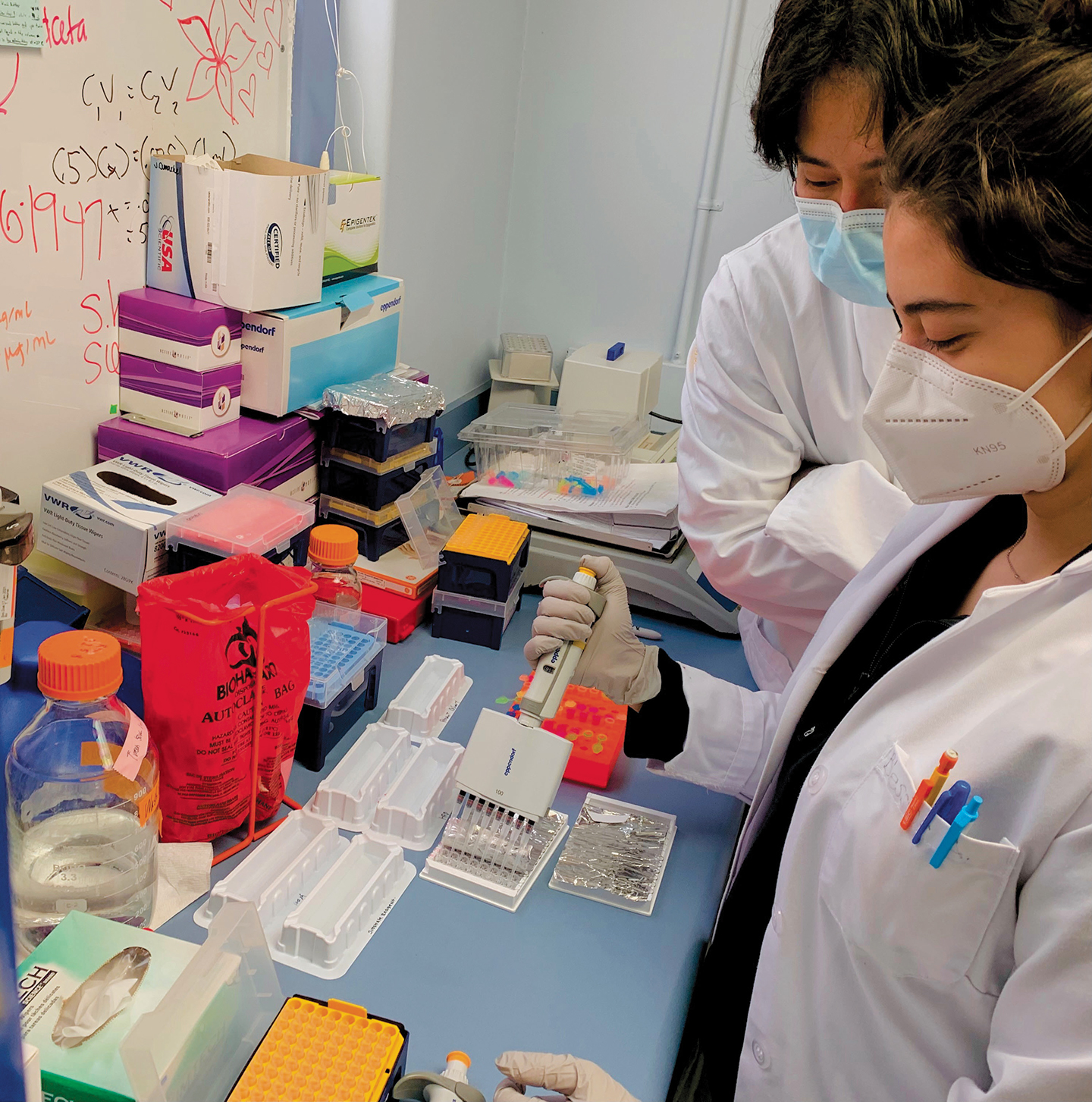
She put all that experience into practice with the Coronavirus Visualization Team (CVT) partnership through Harvard University, which aims to involve students in research projects and share the knowledge of experts to better inform the public about coronavirus and other public health issues. Toruner is a coleader on the CVT’s Project on Gender-Based Violence as part of Harvard’s team, working with partners at Mass General to investigate gender-based violence during the pandemic and hosting a podcast to educate people on the issue.
“We analyzed data from the police and local shelters, and what we have found is that during the pandemic, because everyone was staying home, the gender-based violence cases were actually increasing,” Toruner said. “Because a lot of shelters were closing and people were more hesitant to reach out for help or go to the ICU or the hospital to seek help. We wanted to see how we can help the public to get more informed about this, and we started the She Belongs podcast.”
The podcast, she said, aims to kickstart the conversation on gender inequity. She and her coproducers interview researchers, health care experts, and first responders offering their perspectives on the increase in gender-based violence.
Judy Jang, interim associate dean of medicine for the PLME and assistant professor of medicine, said, “Deniz feels just as comfortable doing benchwork as she is working on clinical research and applications. She combines her love of biology, neuroscience, and computer science in her work and has built an impressive network of mentors across multiple institutions. When COVID-19 hit, she seamlessly transitioned much of her research online and developed the podcast, highlighting the increased vulnerability of women to violence seen during the pandemic. Deniz exemplifies the qualities of an outstanding scientist and future physician.”
Determination
Strengthening research methods through setbacks
Brown Class of 2021 graduate Ashley Battenberg lost months of in-person research time in the lab throughout the spring and summer of 2020. But this lost time actually strengthened her project, which investigated proteins that can contribute to age-related diseases and cancer.
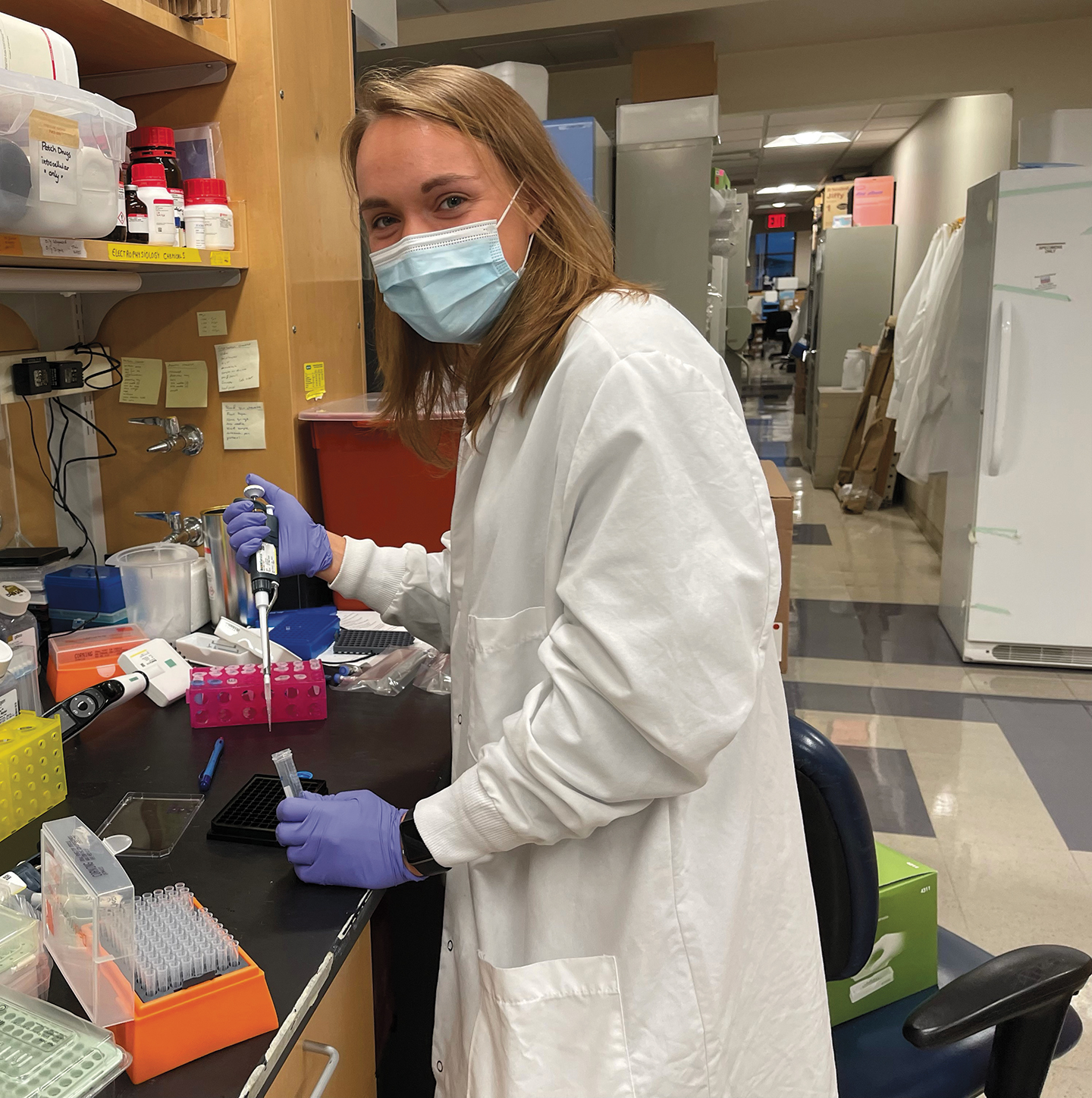
As part of her degree in biochemistry and molecular biology, Battenberg planned to be on campus working on the project during the summer between her junior and senior years, which wasn’t possible during the pandemic. So instead of separating DNA fragments and studying them in Professor Gerwald Jogl’s biology lab at Brown that summer, Battenberg was at home in Wisconsin, running computational models on her computer. What could have been a setback helped her work become more exact once she was able to return to the lab.
“The protein I’m looking at doesn’t have clear start and stop sites. What I wanted to do in the lab was use that protein and see how it binds to DNA, but I was just going to guess the start and stop sites with trial and error,” she said. “But with my computational methods, I used modeling software that predicted the start and stop sites for me. I did a bunch of research and computations on what the most likely start and stop sites were, and I used that information when I went back to the lab.”
Her work won the Biology Senior Prize, and now she’s a research assistant in the neurology department at Massachusetts General Hospital, studying chronic pain and amyotrophic lateral sclerosis (ALS), with plans to attend medical school down the road.
“In research, you always have to be prepared,” she said, “because you never know the next method you’re going to use or the next question you’re going to have to ask.”
Innovation
Responding to scarcity with a 3D ventilator design
Brown Class of 2020 graduate John Antolik worked “pretty much nonstop” on an engineering project when Brown paused academic activity temporarily after the pandemic’s full arrival in March 2020. The project was a ventilator design made with valves created on a three-dimensional printer, since ventilators and the parts needed to build them were in short supply at the beginning of the pandemic.
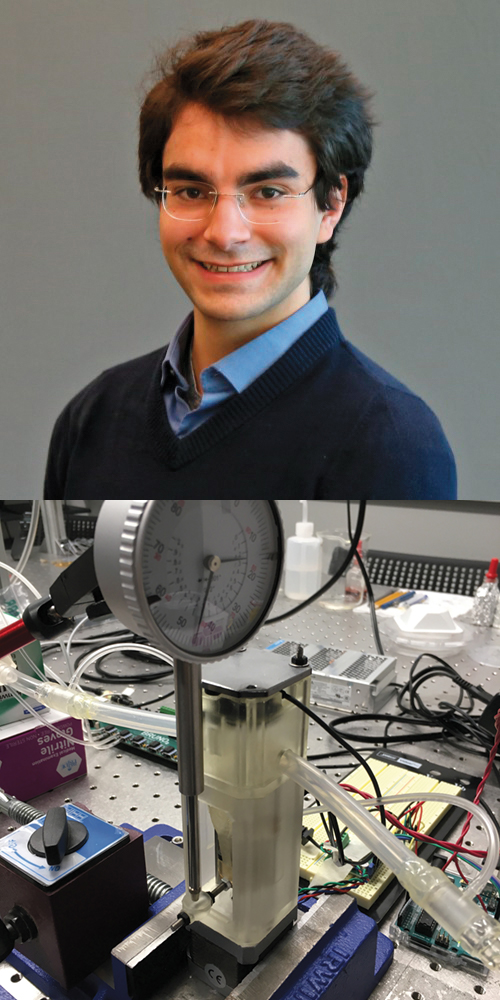
“We wanted to do our best to make something that can actually help make a difference,” said Antolik, who graduated from Brown with a degree in mechanical engineering and is now pursuing his Ph.D. in engineering at Brown, focusing on fluids and thermal sciences. “It was seeing everyone else in the group working so hard and being inspired by them to go the extra mile.”
The group, which began the work as part of a contest soliciting designs for low-cost ventilators, included several other undergraduate students as well as engineering faculty Roberto Zenit and Daniel Harris. After the contest, they merged their efforts with researchers at Stanford and the University of Utah to continue the project.
“From the very beginning, we were focused on this open source or open hardware idea, which would mean releasing all the designs, making them publicly available so anyone could build this,” Antolik said. “I was really excited when I saw the level of collaboration happening, what a fast-paced project it was, and how quickly we were going through different ideas and testing them out and making progress towards something that would work.”
In the end, their design was brought to life by scientists in Kenya, who got it approved by their local regulatory organization and are now using it for Kenyan patients. It was the first ventilator of its kind approved on the continent of Africa, according to Zenit.
“I’ve never seen anything like this, where different academic labs and industry partners work together and share everything,” Antolik said. “We’re sharing all kinds of information about ventilator design and combining the innovation of the academic groups with the experience of the industry partners. It was amazing seeing how far we got in such a short time.”
“The ventilator project is a very good example of the Brown spirit,” said Zenit. “We don’t necessarily want to sit out and wait for a storm to pass—we are engineers, we are surrounded by talented people, especially our students. The intellectual part of Brown is there and ready to react under any circumstances. In these emergency conditions we are still facing, just give us some resources and we’ll make good, amazing things for everybody.”
Dedication
Providing essential services and pandemic relief
At 22 years old and just a few months removed from her Brown graduation, Class of 2020 graduate Ella Satish led the Rhode Island Department of Health (RIDOH) rollout of a $1.3 million cash assistance and emergency food assistance program for Rhode Island families in need.
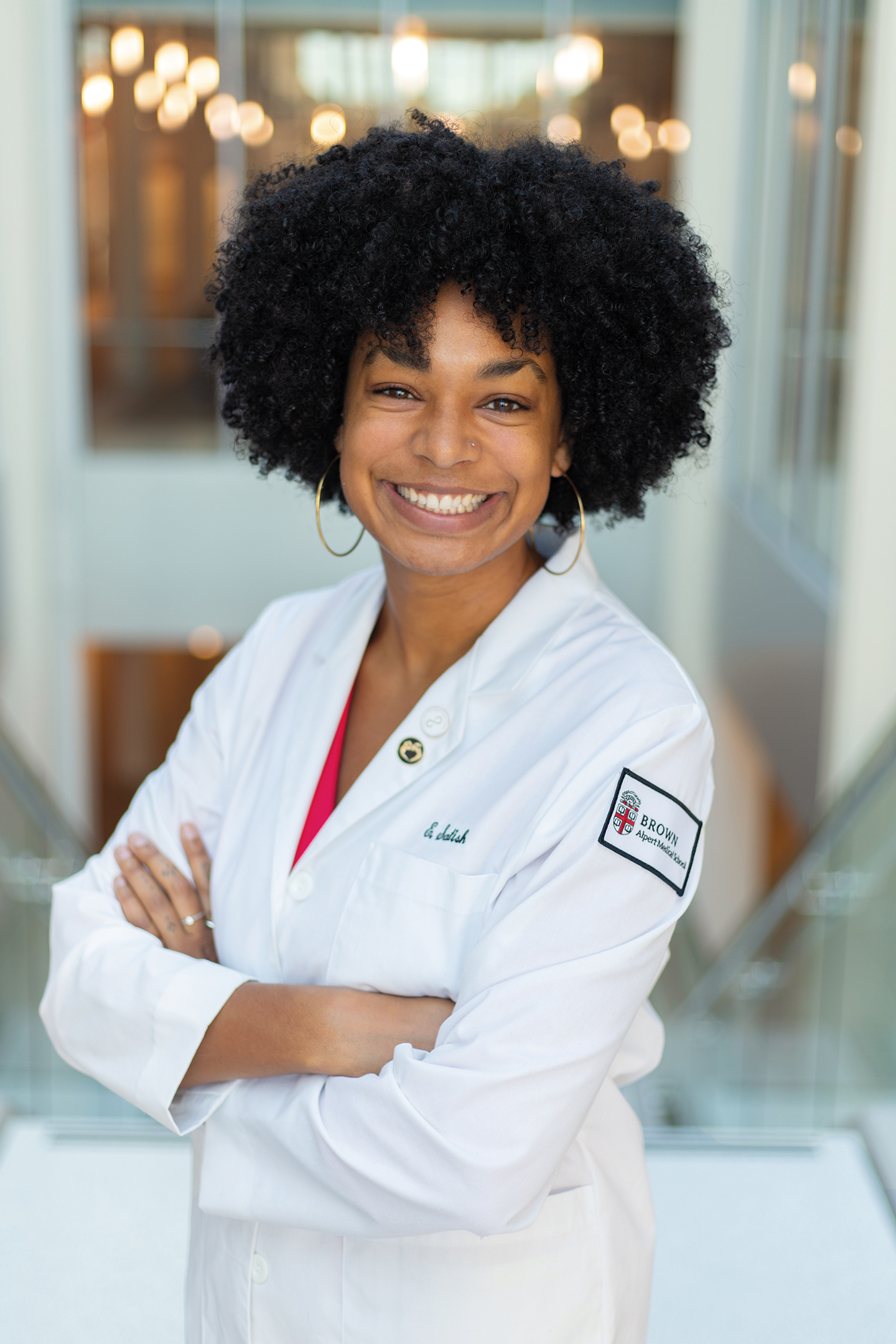
Satish had intended to spend the 2020–2021 academic year on a Fulbright English Teaching Assistantship in Colombia, but she wasn’t able to travel there because of the pandemic. A student in the PLME program, she had already deferred her start date at Brown’s medical school for the Fulbright and needed to make a new plan for her gap year before med school. She landed at RIDOH, working on their COVID-19 quarantine and isolation support team.
“The state gave us all the money but did not give us a plan or a structure, so it was up to me and my team,” said Satish, who also collaborated with the leaders of the state COVID-19 response unit and the Health Equity Institute on the rollout. “We put together a method on how to screen people. We had two weeks to put it together, so it was definitely a challenge and a collaborative effort.”
She found that her research experience as a Latin American and Caribbean Studies major prepared her for the work; for her senior thesis, she had analyzed the maternal child care program in Cuba as a model for improving outcomes and reducing disparities in care for Black mothers in the U.S.
“With the thesis and other research I had done, there’s a lot of big planning stuff, because you have this monumental task ahead of you, which is to write a 90-page thesis or create a publication or do a presentation. I think it was a similar experience with the health department, even though it was a time crunch,” Satish said. “Doing that sort of planning for a task so big was definitely something that had started with my undergraduate research and came to fruition working with the health department.”
And while Satish ultimately wasn’t able to have her planned Fulbright experience, her work at RIDOH provided essential services to the Rhode Island community. The food assistance program was able to deliver meals to families on the same day their help was requested.
